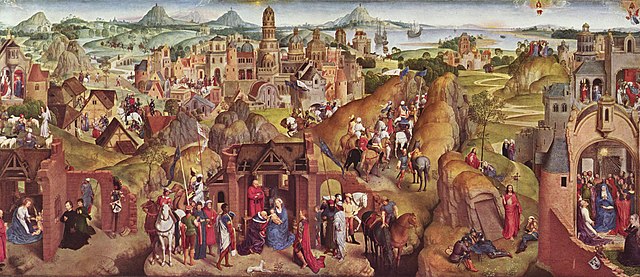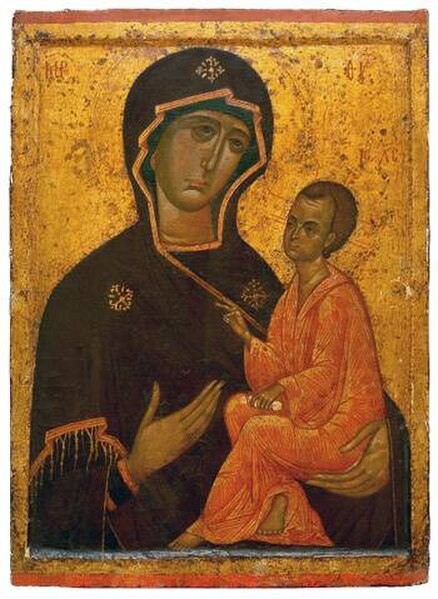In Christian iconography, Christ Pantocrator is a specific depiction of Christ. Pantocrator or Pantokrator, literally ruler of all, but usually translated as "Almighty" or "all-powerful", is derived from one of many names of God in Judaism.
Jesus Christ Pantocrator (Detail from the deesis mosaic in Hagia Sophia, Istanbul)
Christ Pantocrator in the dome of the Church of the Holy Sepulchre's catholicon. Church domes are a common site of Pantocrator images.
Christ Pantocrator mosaic in Byzantine style from the Cefalù Cathedral, Sicily
The oldest known icon of Christ Pantocrator, encaustic on panel (Saint Catherine's Monastery). The two different facial expressions on either side may emphasize Christ's two natures as fully God and fully human.
Iconography, as a branch of art history, studies the identification, description and interpretation of the content of images: the subjects depicted, the particular compositions and details used to do so, and other elements that are distinct from artistic style. The word iconography comes from the Greek εἰκών ("image") and γράφειν.
Holbein's The Ambassadors (1533) is a complex work whose iconography remains the subject of debate.
A painting with complex iconography: Hans Memling's so-called Seven Joys of the Virgin – in fact this is a later title for a Life of the Virgin cycle on a single panel. Altogether 25 scenes, not all involving the Virgin, are depicted. 1480, Alte Pinakothek, Munich.
A 17th century Central Tibetan thanka of Guhyasamaja Akshobhyavajra.
The Theotokos of Tikhvin of c. 1300, an example of the Hodegetria type of Madonna and Child.







